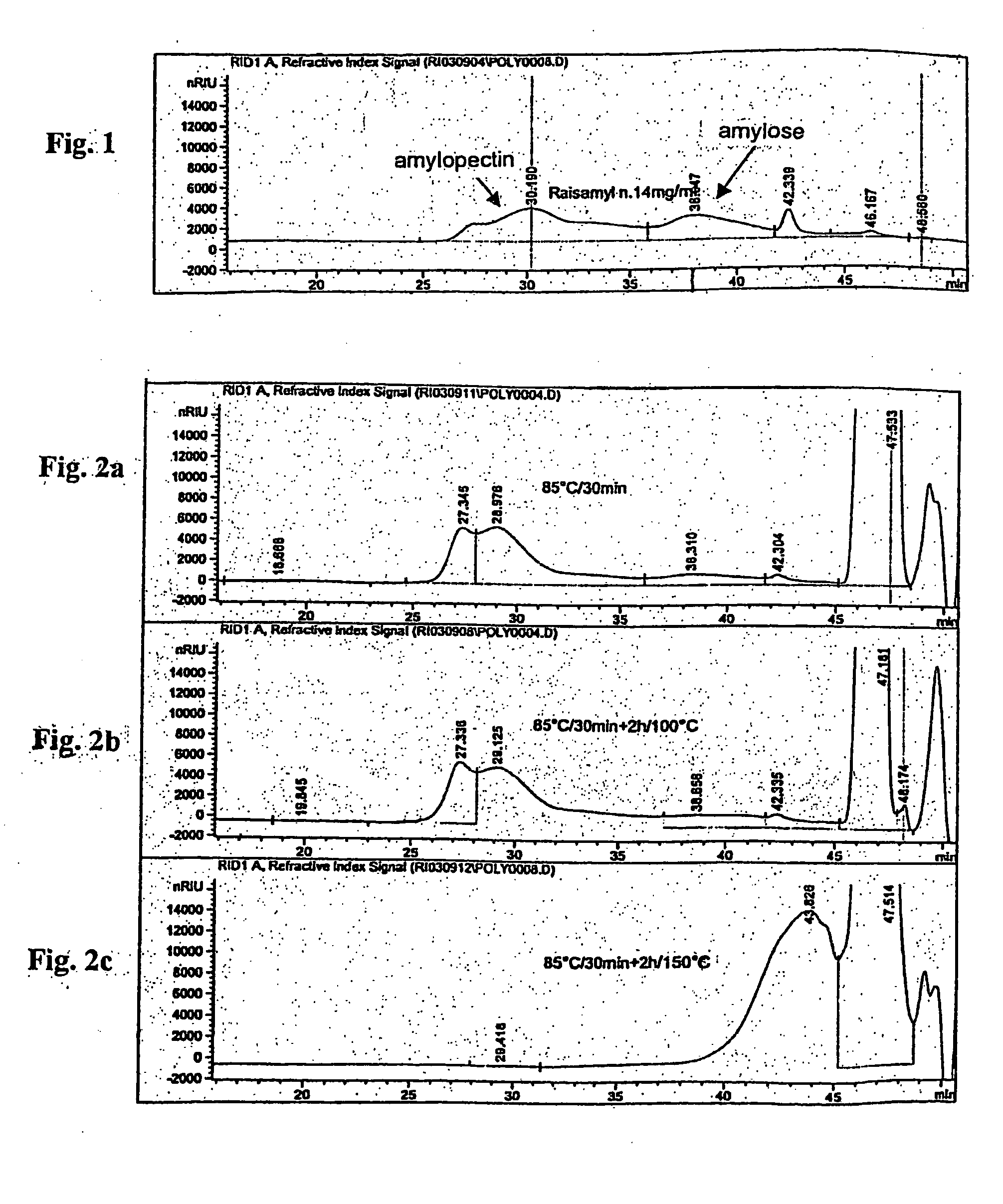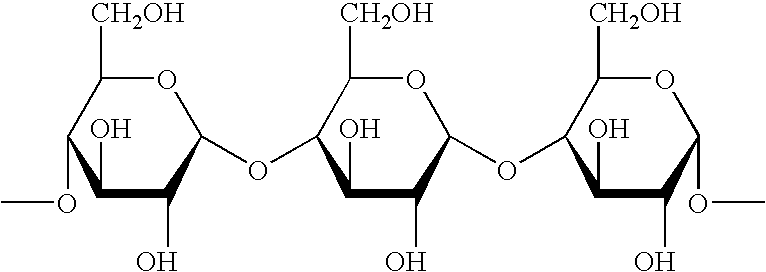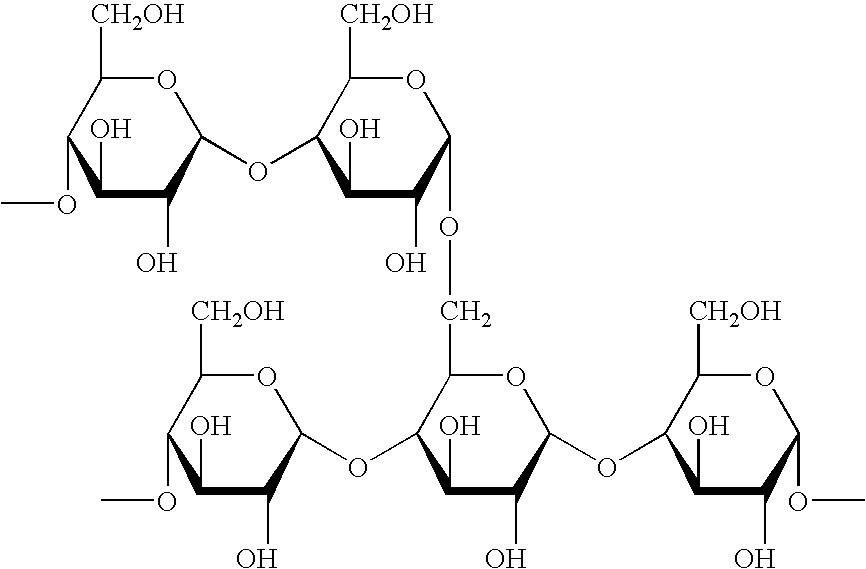Depolymerization method
- Summary
- Abstract
- Description
- Claims
- Application Information
AI Technical Summary
Benefits of technology
Problems solved by technology
Method used
Image
Examples
example 4
Depolymerization of Native Barley Starch at 60° C.
[0072]A 150 mg (1 mmol) sample of oven dried native barley starch (Raisamyl) was added into ionic liquid (BMIMCl, 3 ml) and the resulting clear mixture was stirred 2 hours at 60° C. The clear reaction mixture was analyzed with GPC. The GPC spectrum showed no changes compared to starting material spectrum.
example 5
Depolymerization of Native Barley Starch at 45° C.
[0073]A 150 mg (1 mmol) sample of oven dried native barley starch (Raisamyl) was added into ionic liquid (BMIMCl, 3 ml) and the resulting clear mixture was stirred 2 hours at 45° C. The clear reaction mixture was analyzed with GPC. The GPC spectrum showed no changes compared to starting material spectrum.
[0074]The percentages in this specification refer to % by weight unless otherwise specified.
example 1
Depolymerization of Native Barley Starch at 150° C.
[0076]A 1.50 mg (1 mmol) sample of oven dried native barley starch (Raisamyl) was added into ionic liquid (BMIMCl, 3 m) and the resulting clear mixture was stirred 30 minutes at 85°(and at. 150° C. for 2 hours. The pale brown reaction mixture was analyzed with GPC. All the starch was depolymerized into monomeric products, see FIG. 2c.
PUM
| Property | Measurement | Unit |
|---|---|---|
| Temperature | aaaaa | aaaaa |
| Temperature | aaaaa | aaaaa |
| Temperature | aaaaa | aaaaa |
Abstract
Description
Claims
Application Information
 Login to View More
Login to View More - R&D
- Intellectual Property
- Life Sciences
- Materials
- Tech Scout
- Unparalleled Data Quality
- Higher Quality Content
- 60% Fewer Hallucinations
Browse by: Latest US Patents, China's latest patents, Technical Efficacy Thesaurus, Application Domain, Technology Topic, Popular Technical Reports.
© 2025 PatSnap. All rights reserved.Legal|Privacy policy|Modern Slavery Act Transparency Statement|Sitemap|About US| Contact US: help@patsnap.com



